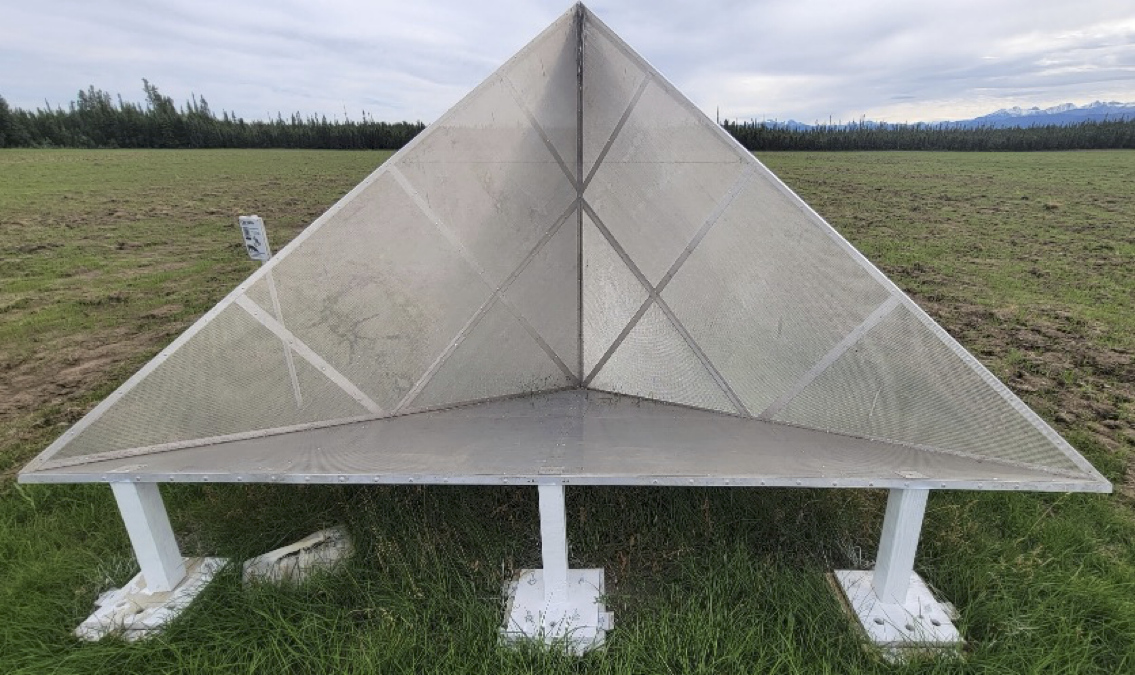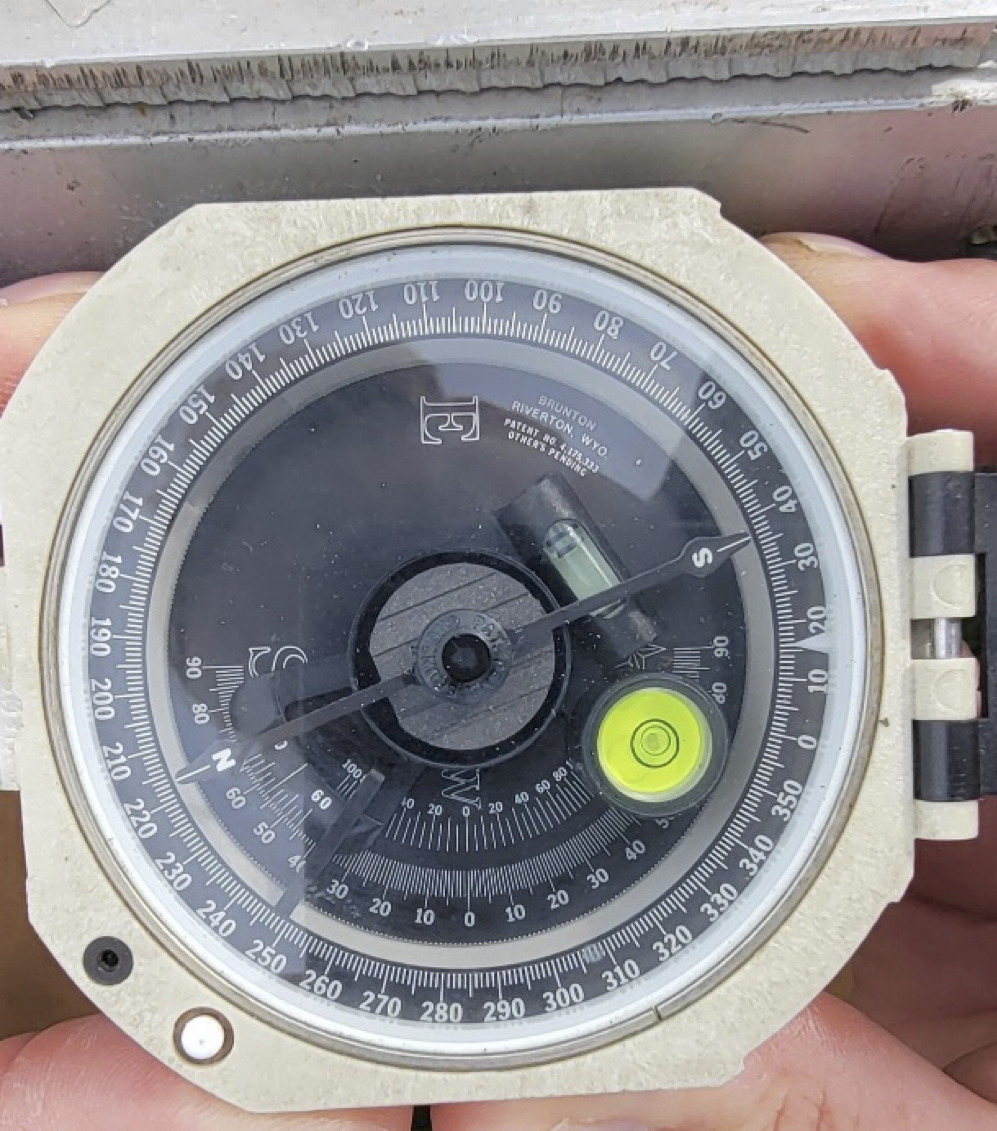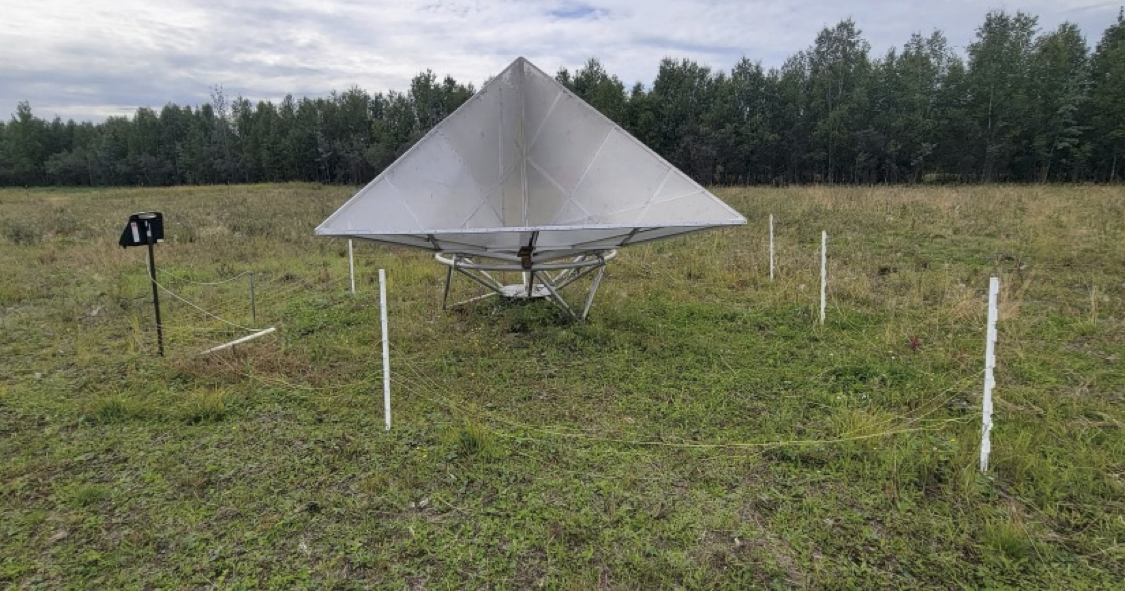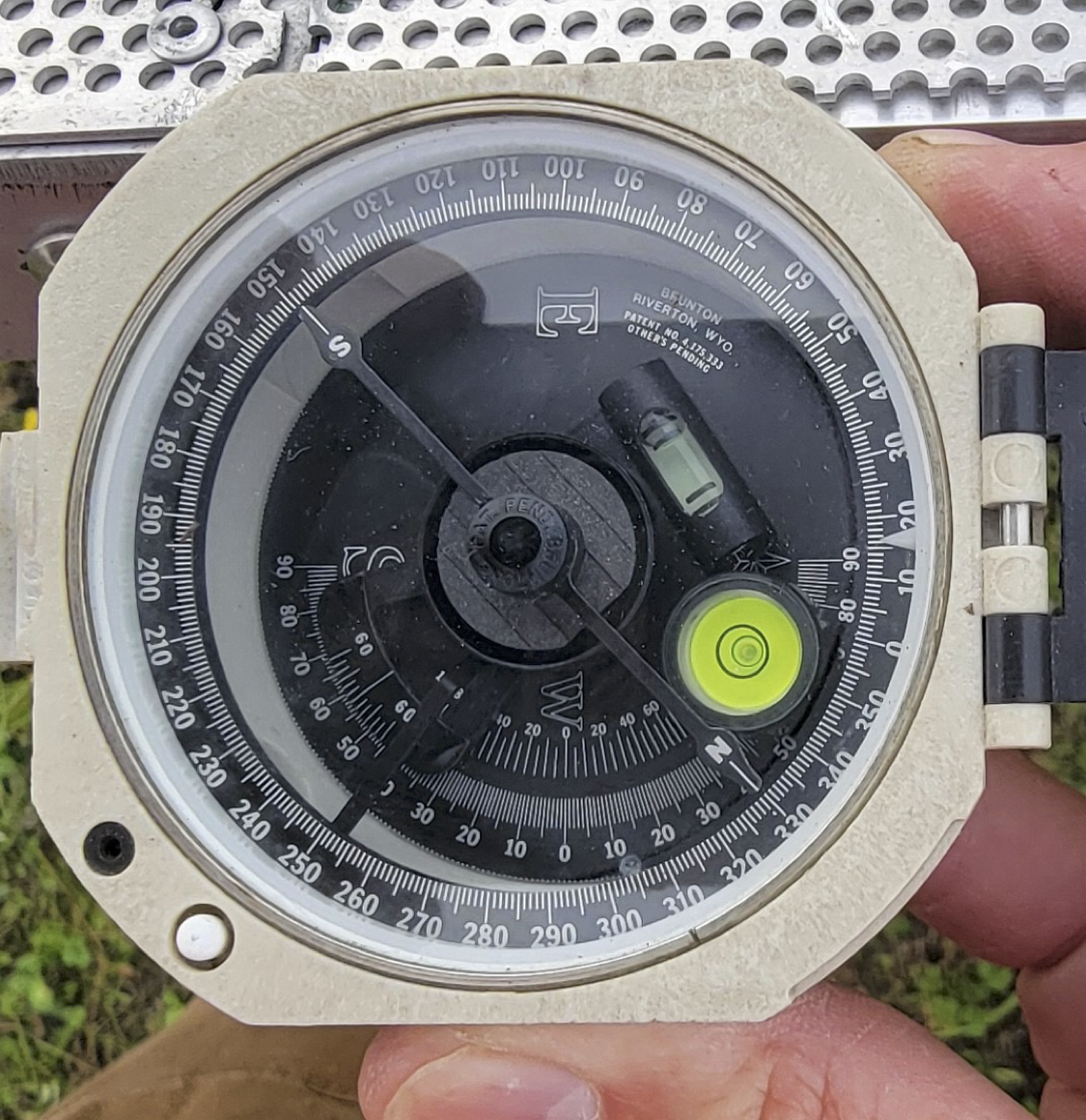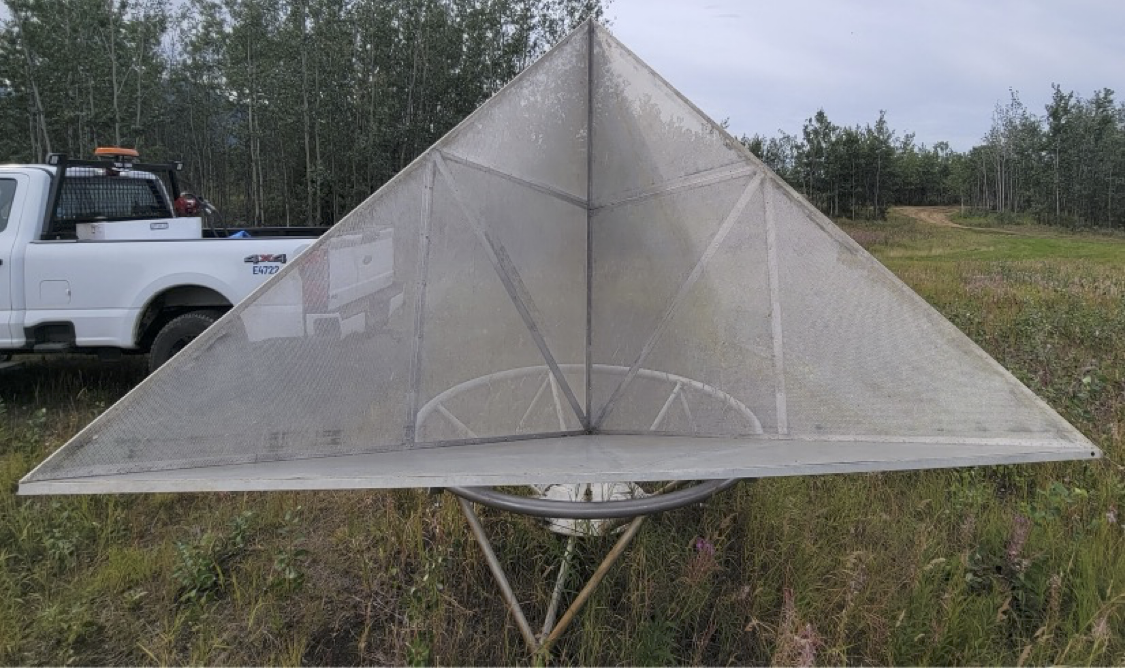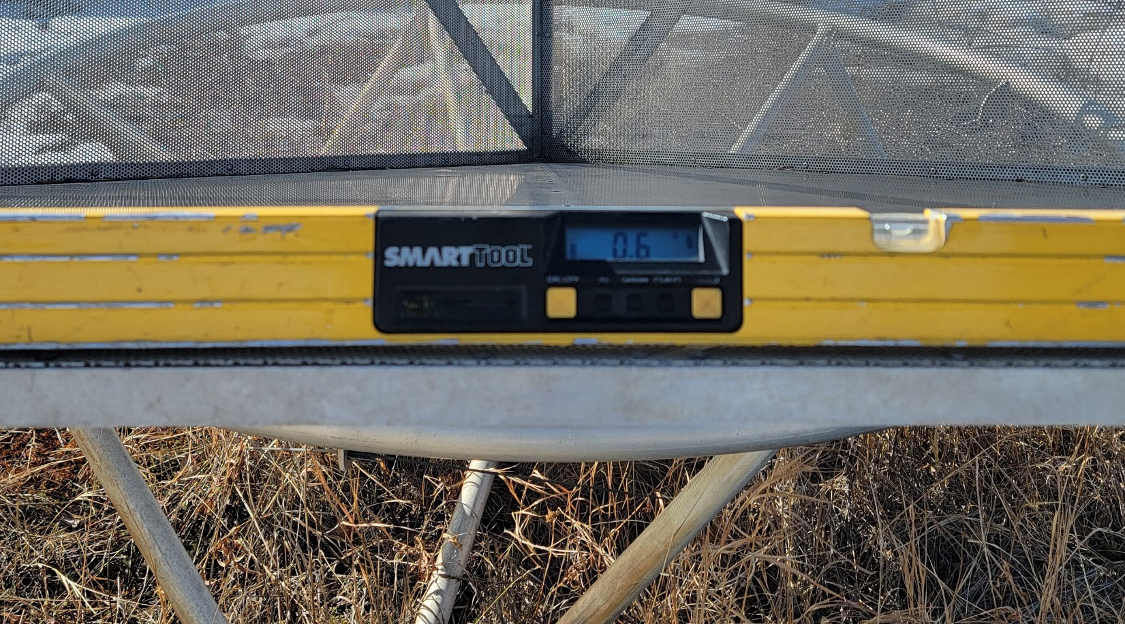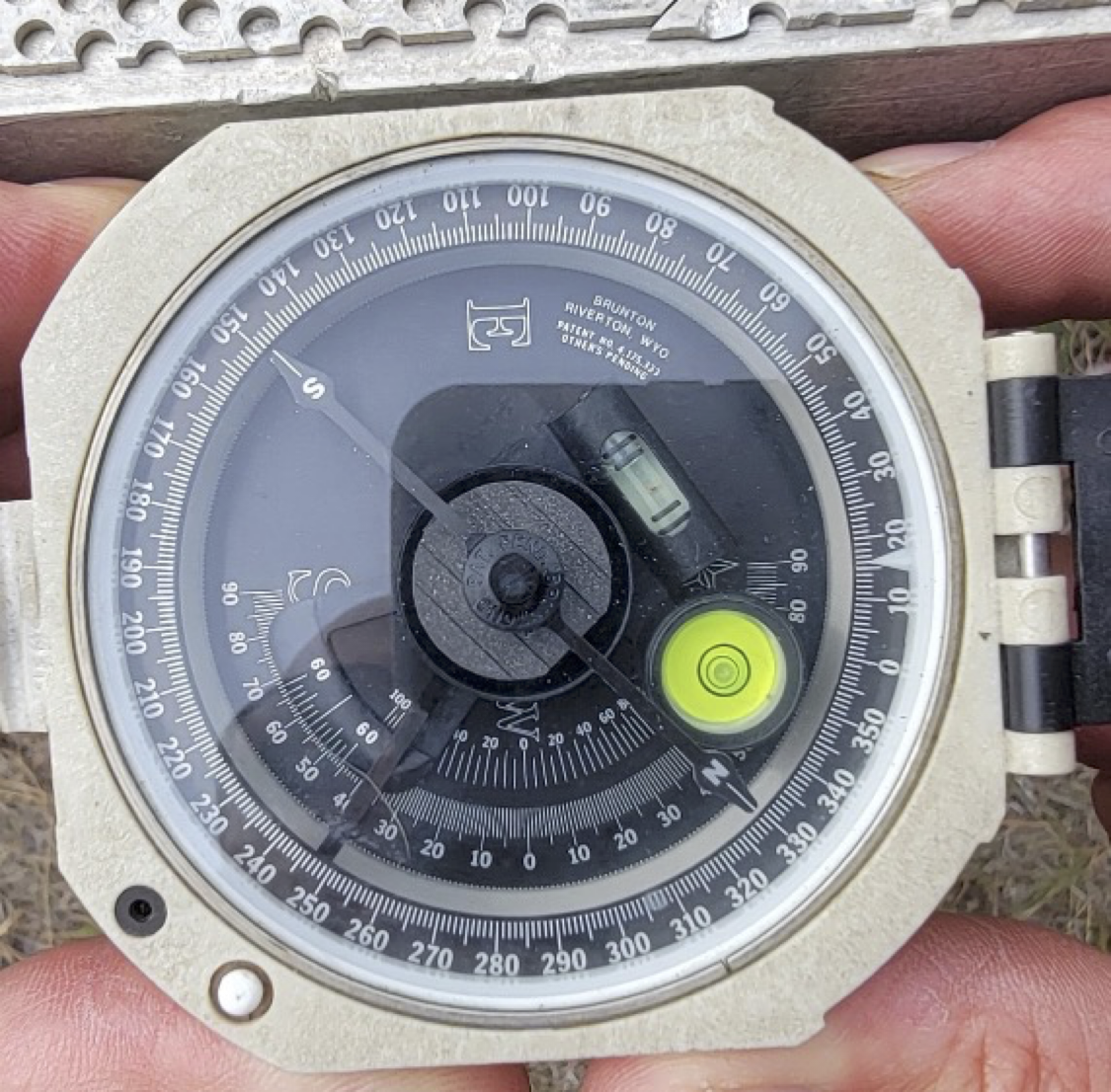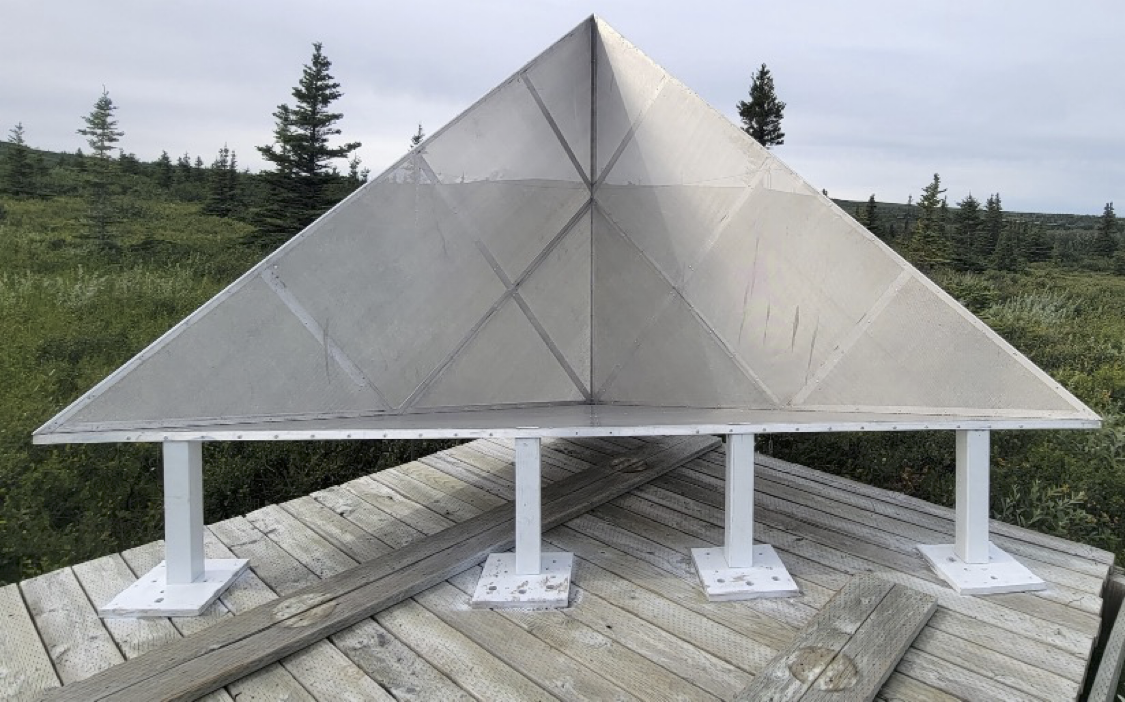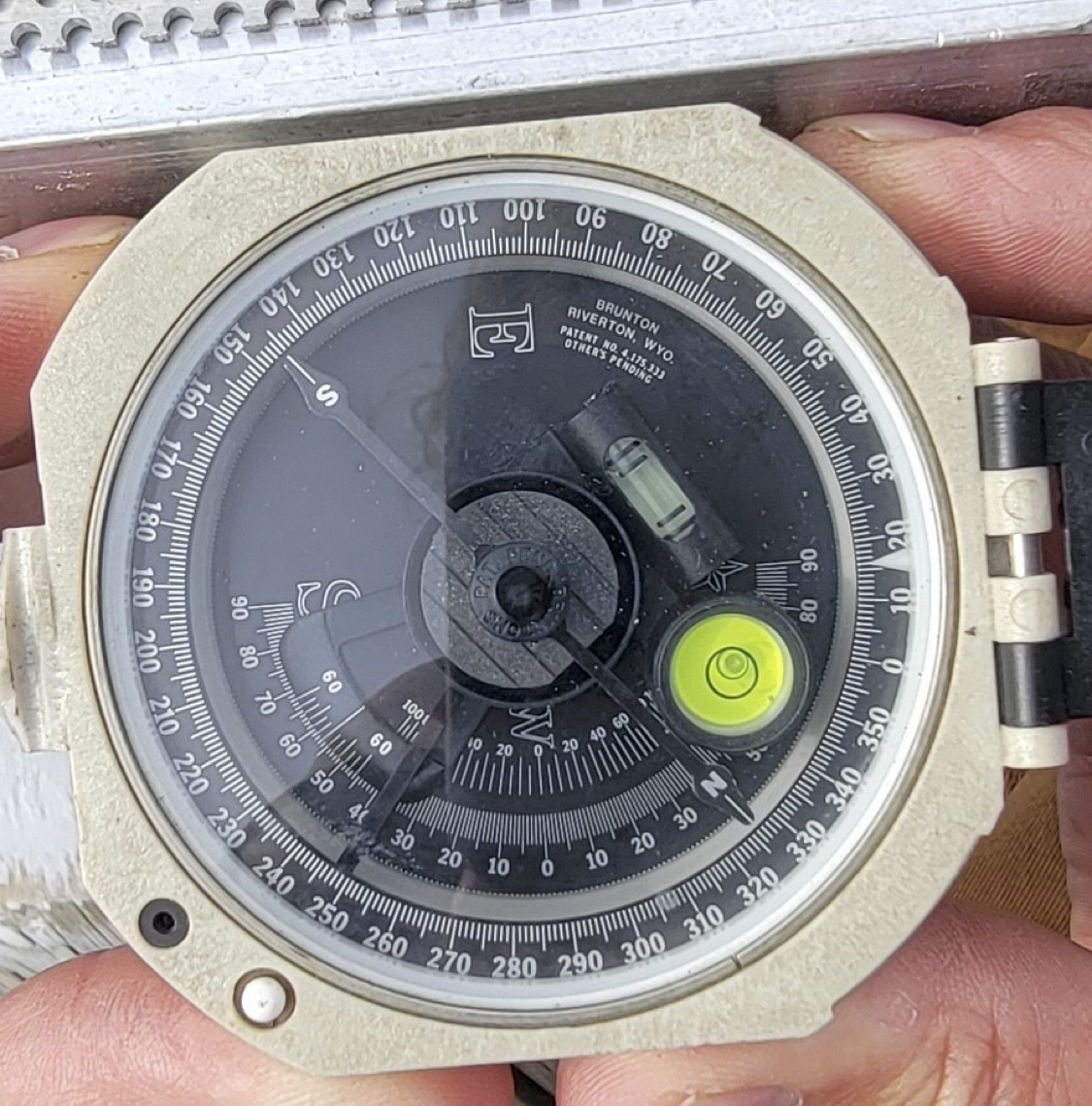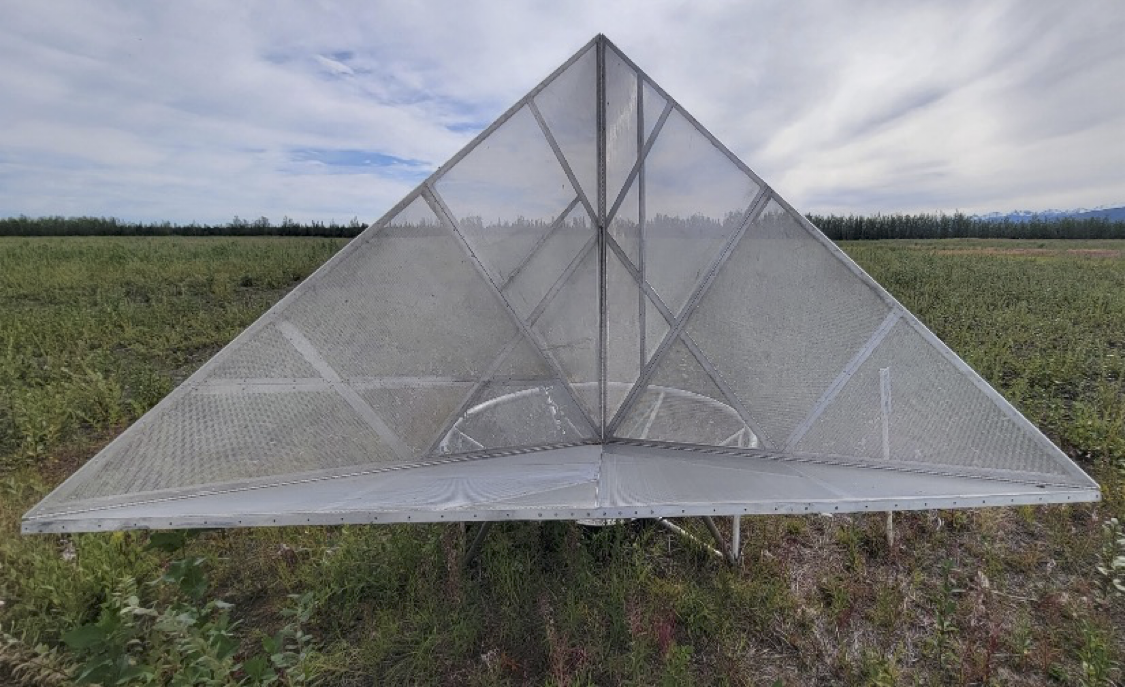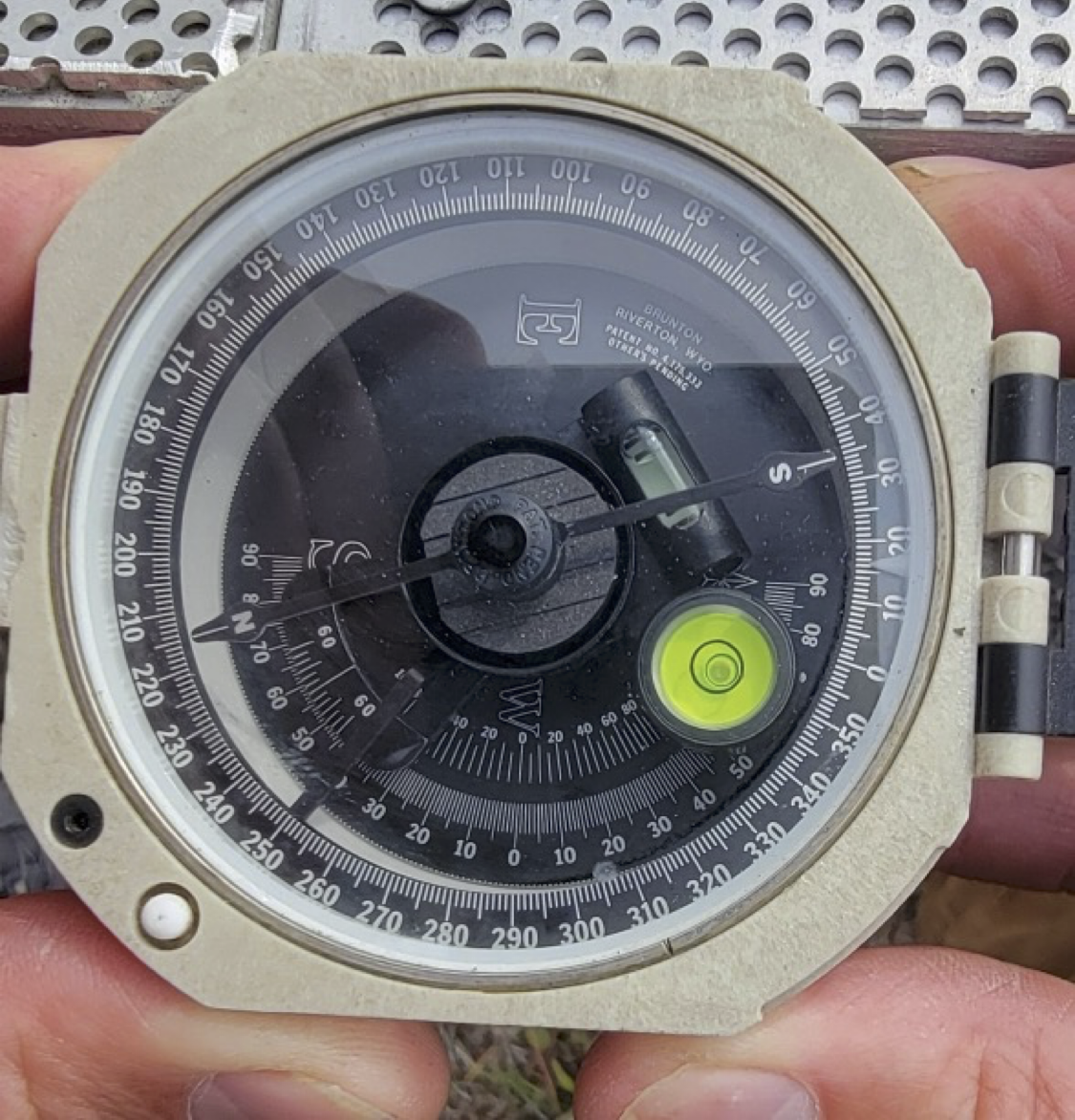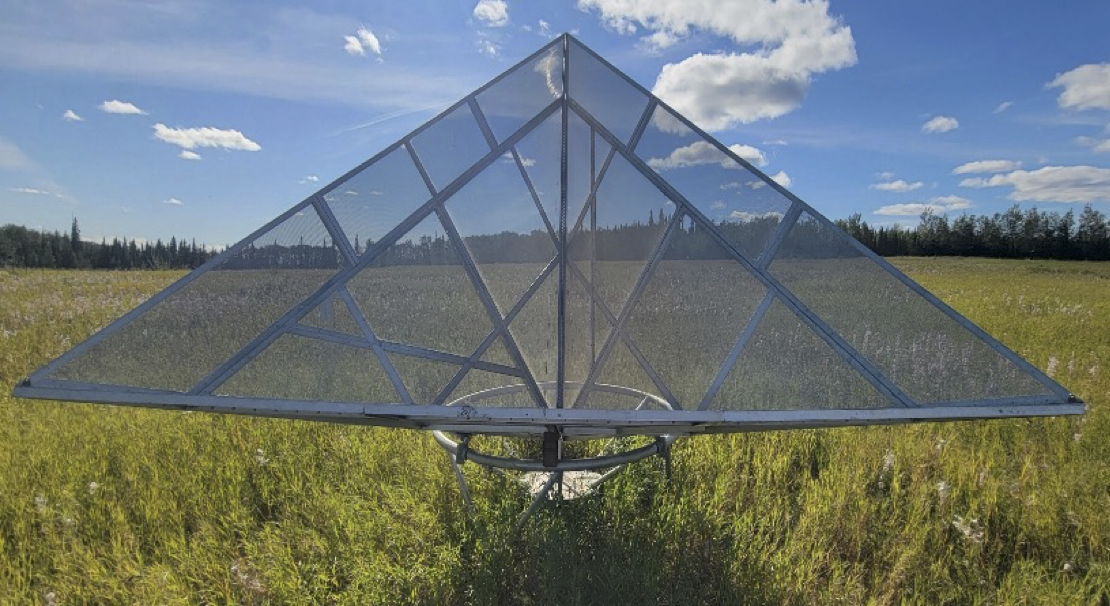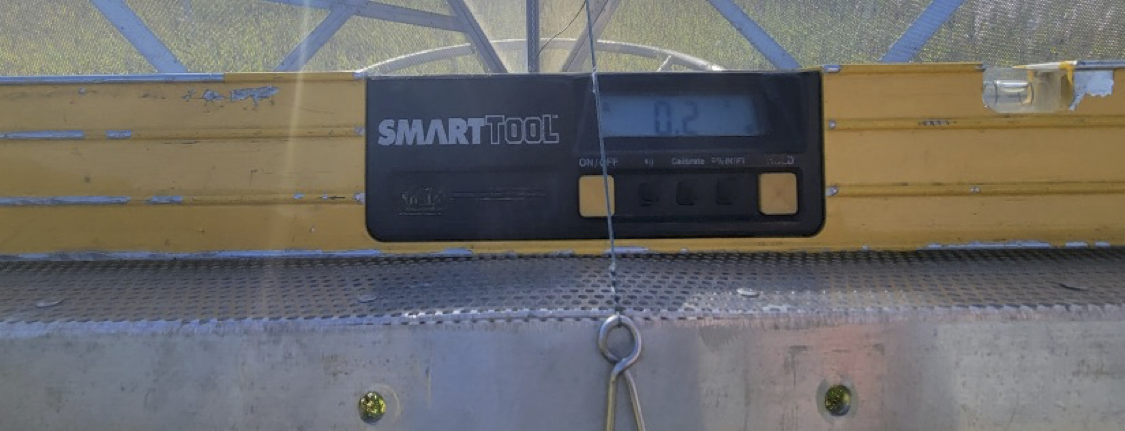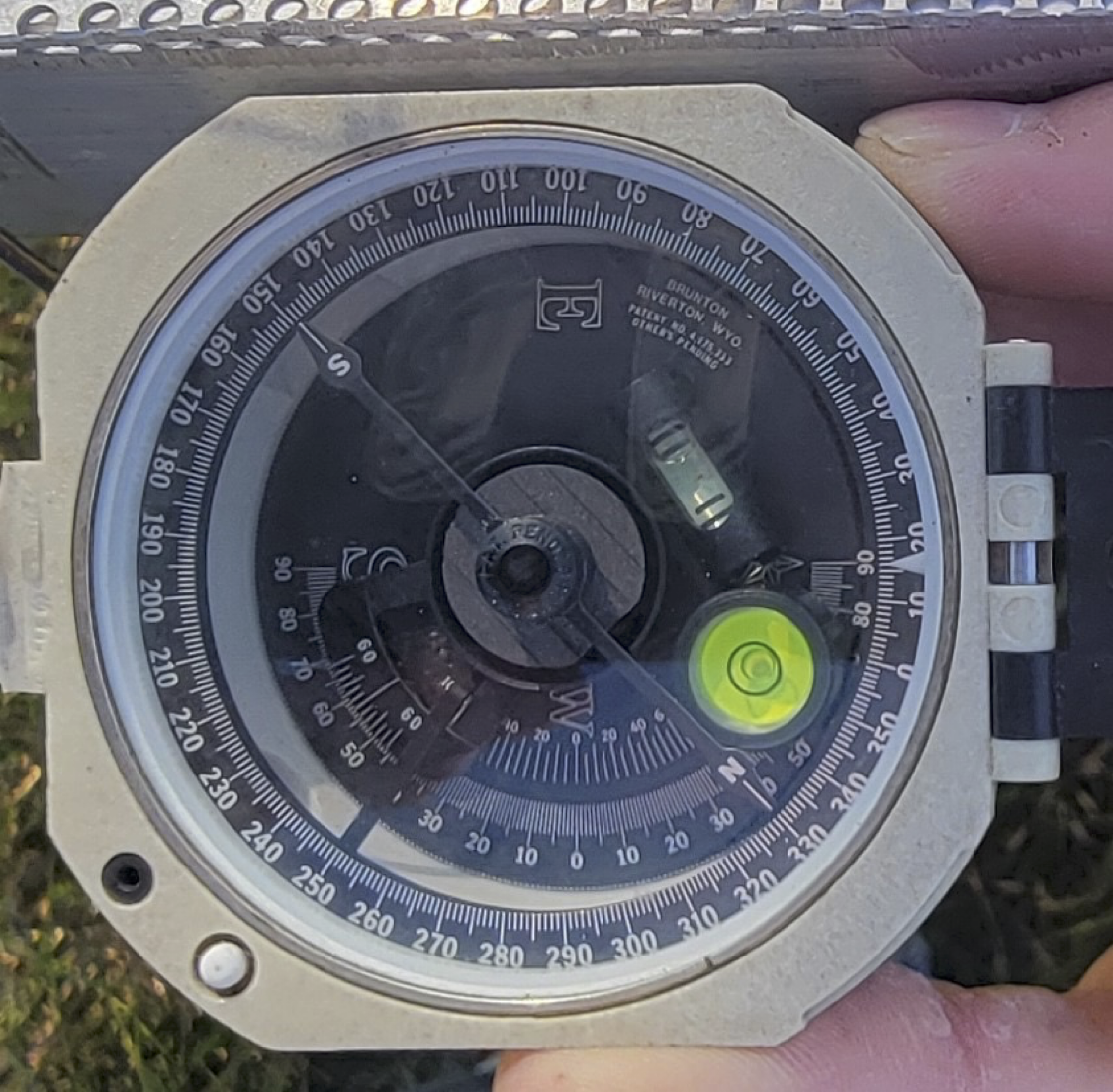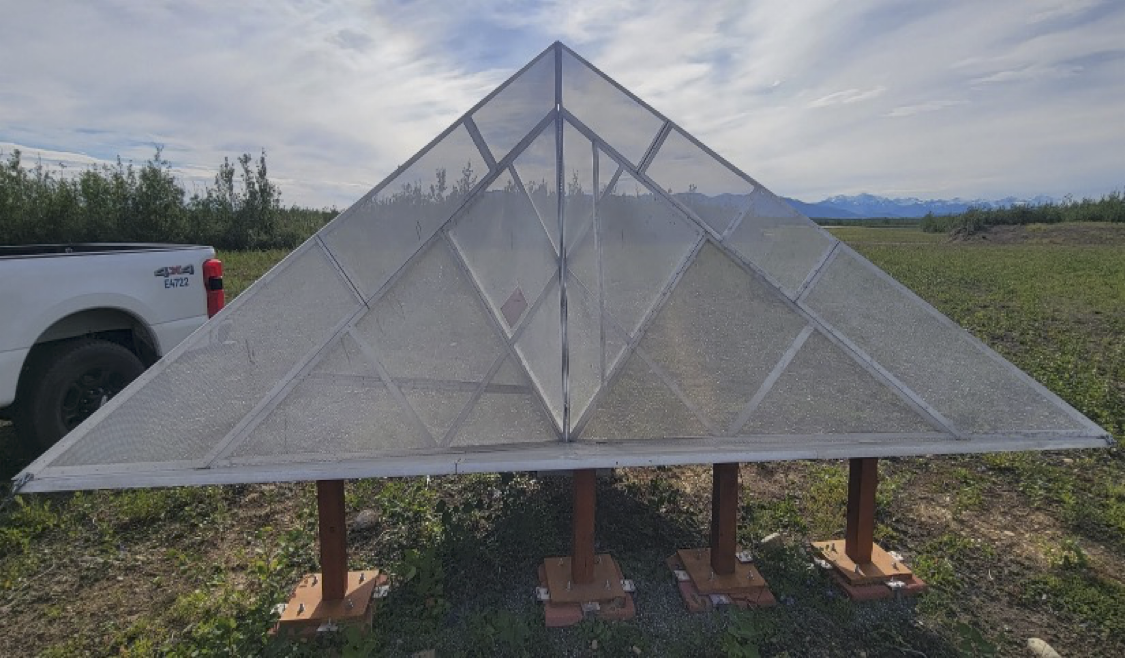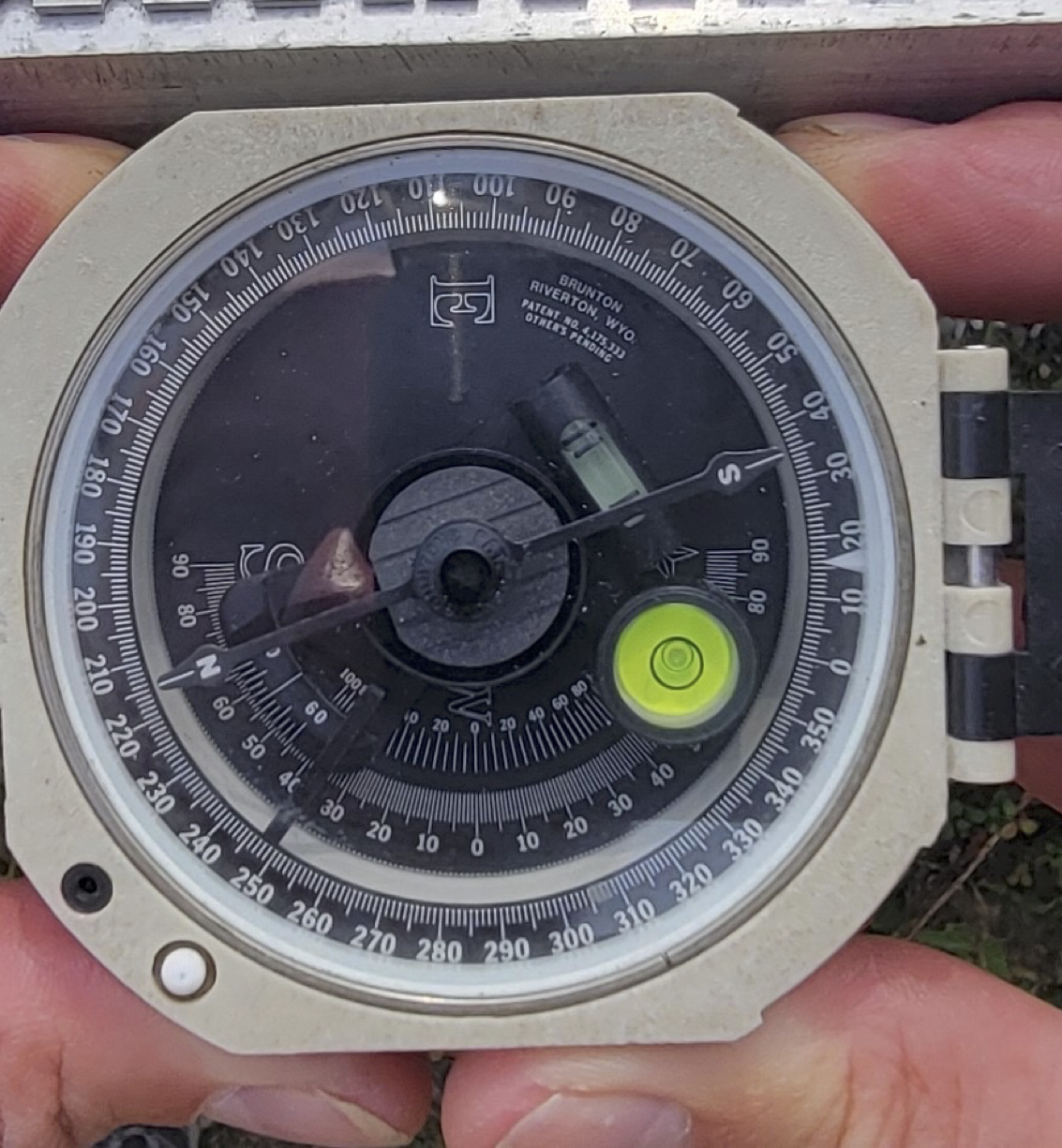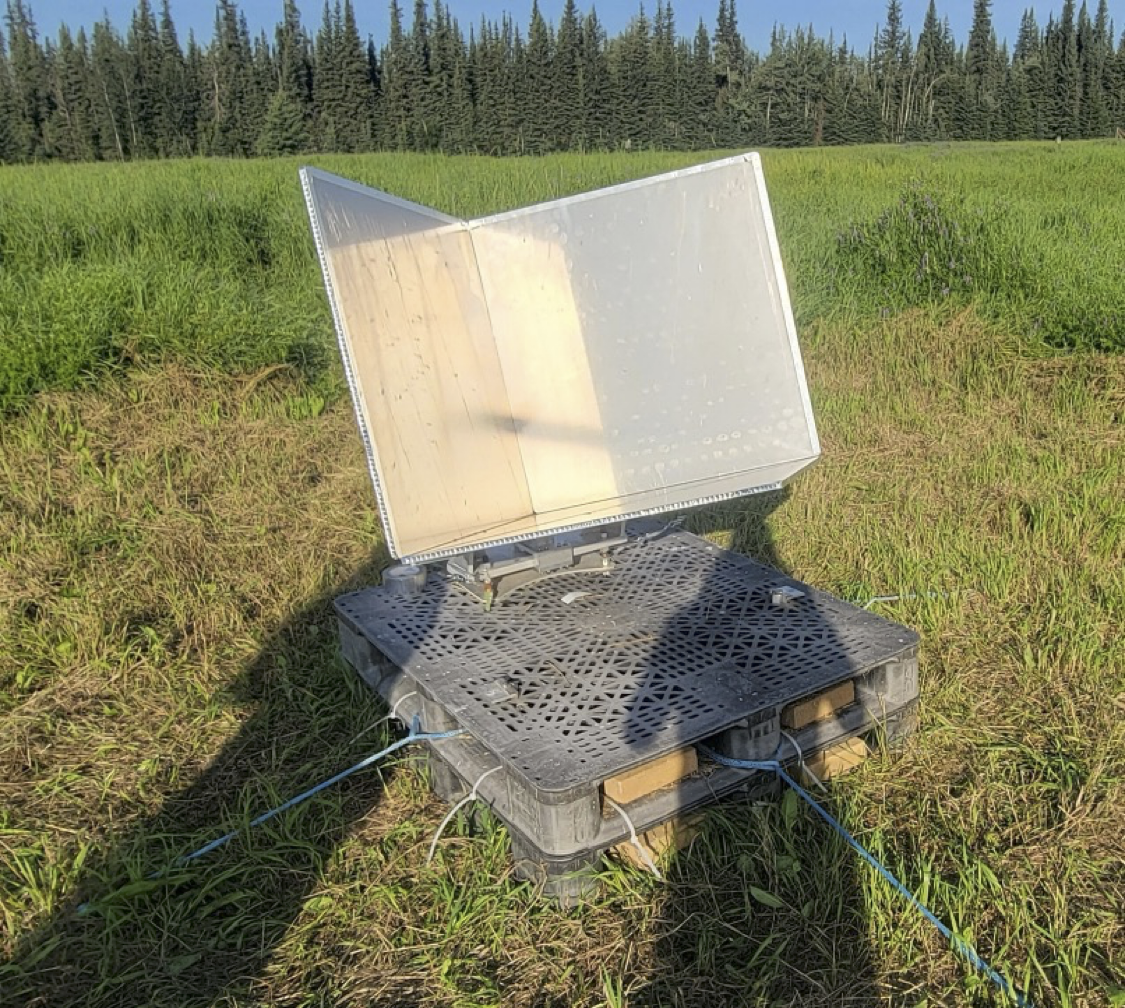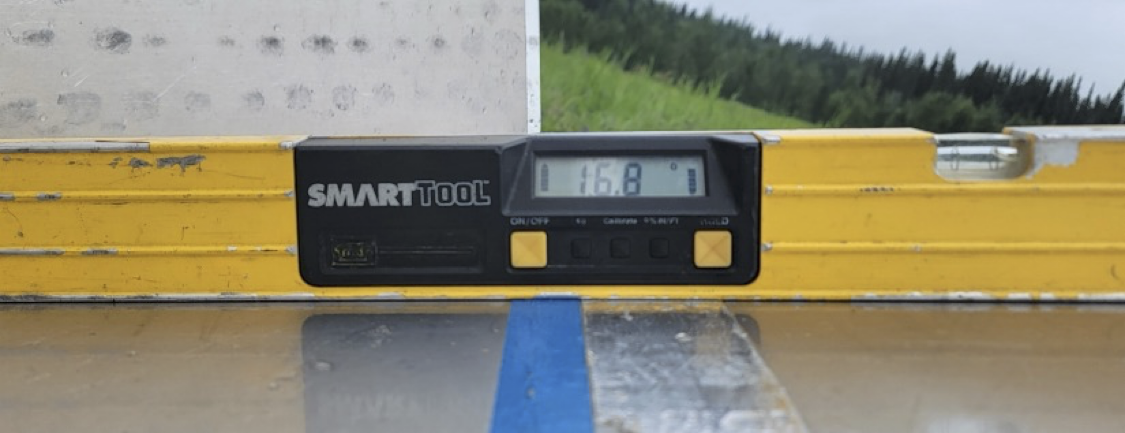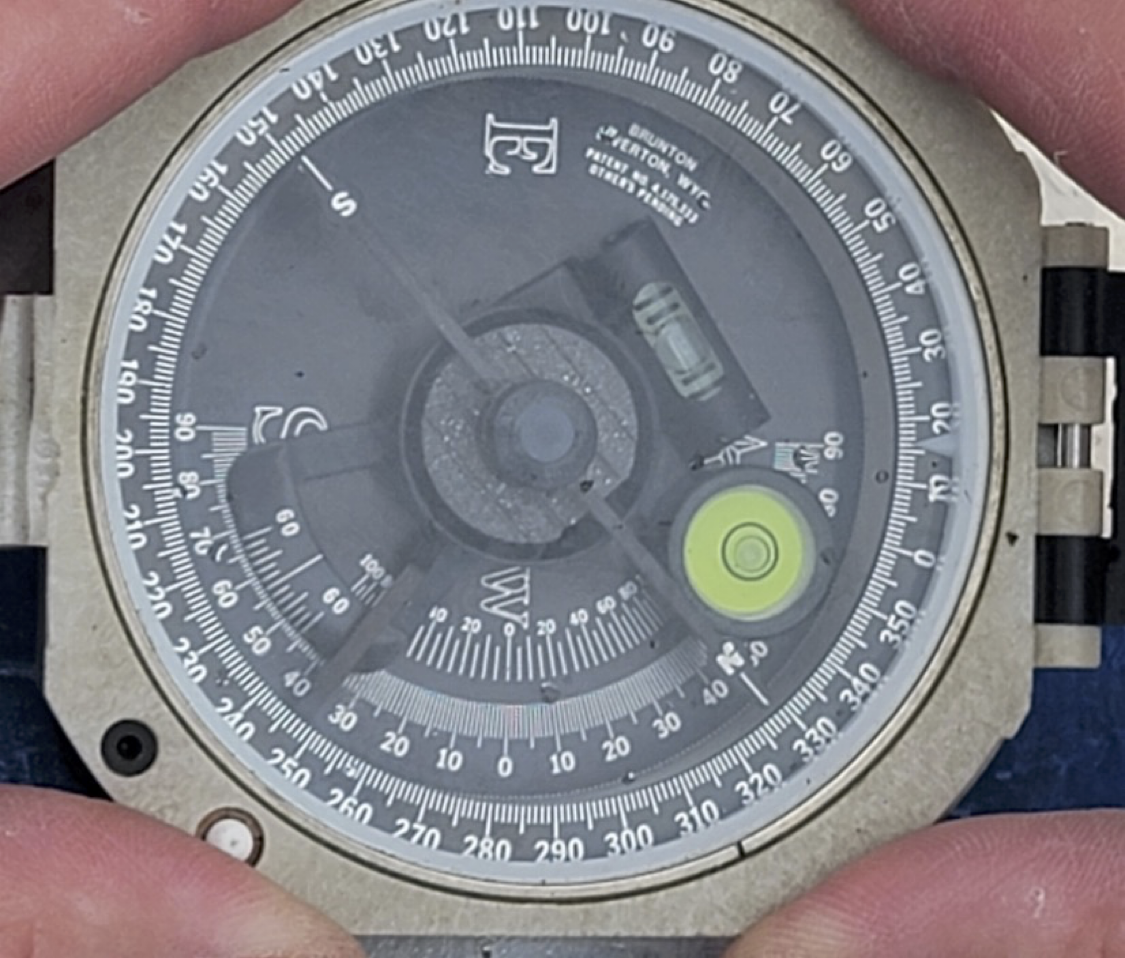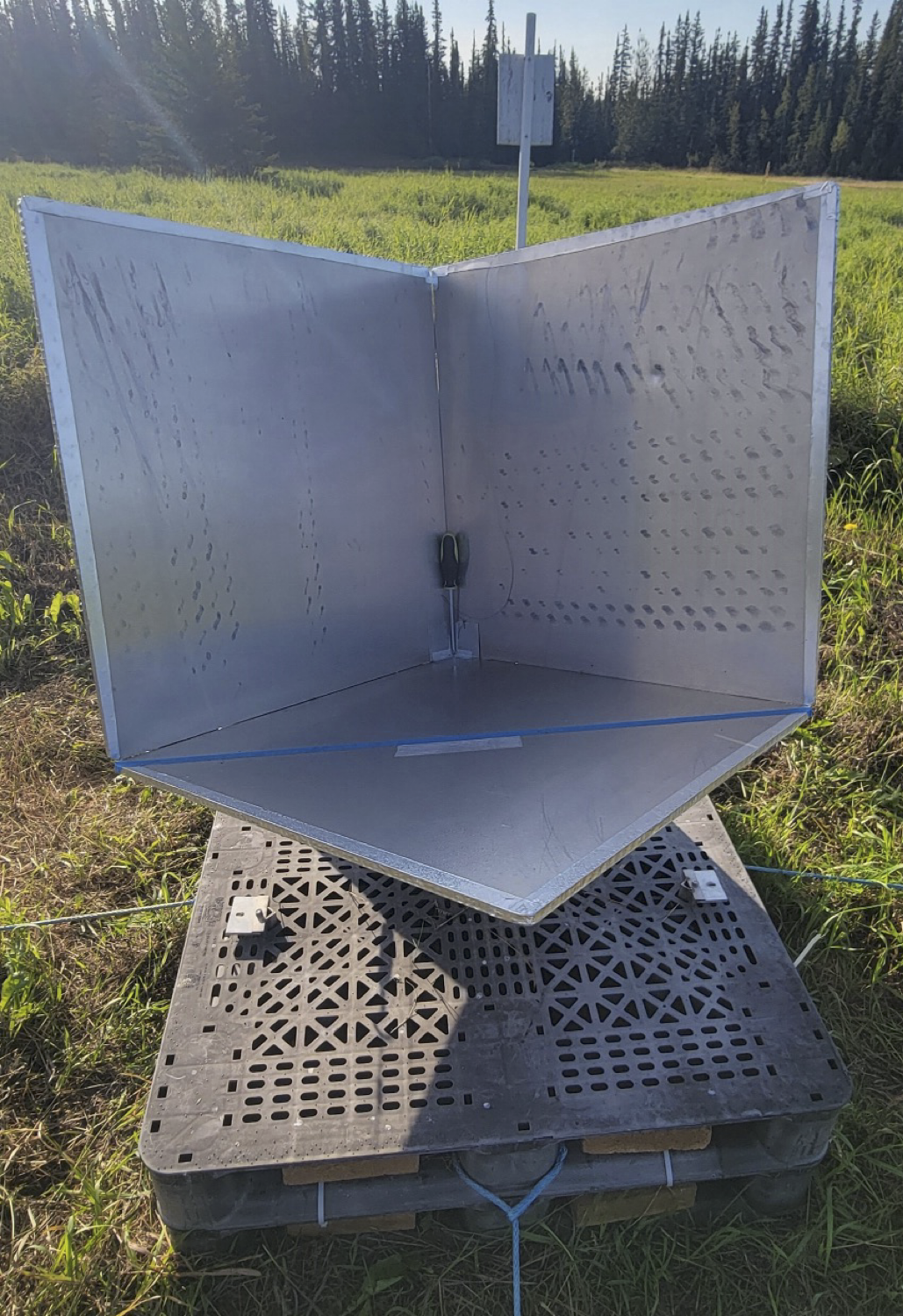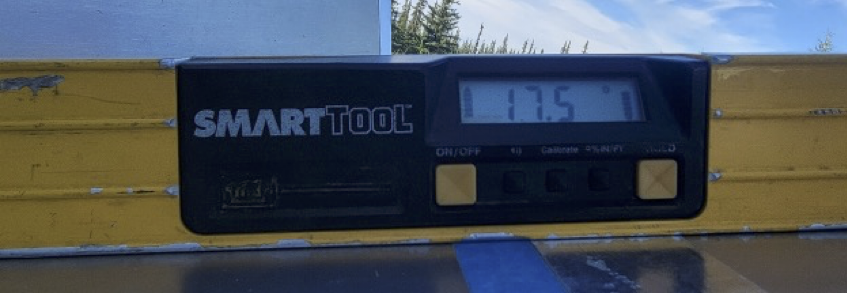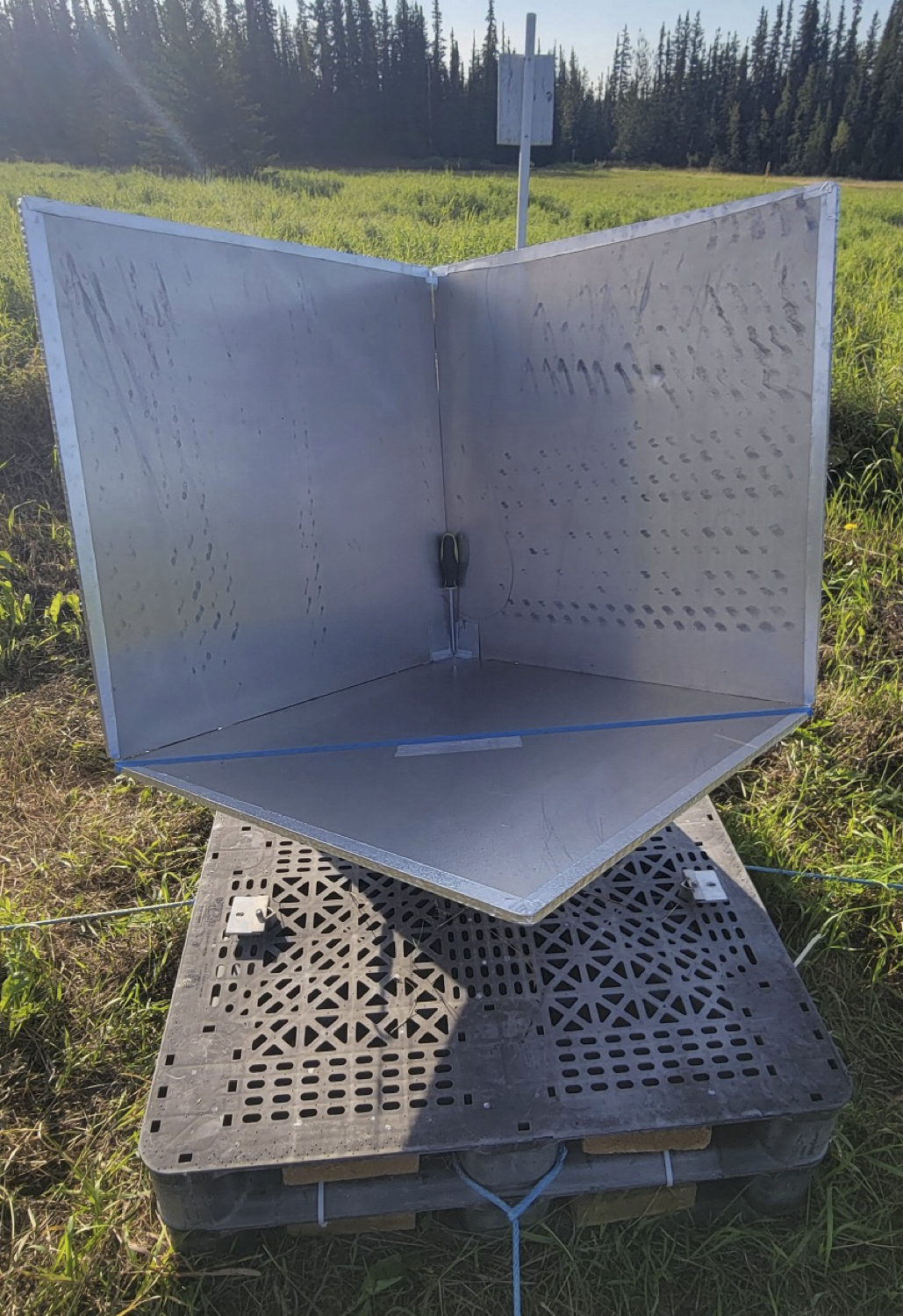N01A (2.8-m, PBR East, mostly west facing)
This CR had a slight bow; we took it out using 150-pound test braided nylon fishing line during April’s inspection. In August, we found the braided line was still tight and holding. The State plowed the field this target is in; it should be bright target for NISAR.
N02A (2.4-m, private land, mostly east facing)
In May, we repaired the target due to damage from cattle. We added support under the bottom center panel and between it and the ring base to eliminate significant sagging. We also reinforced the side panels by adding braces to straighten them out. Cattle were placed back in this field for the summer. Some damage to the fence from cattle, but they did not appear to move the CR. Electric fence was restored in August.
N03A (2.4-m, PBR West, mostly east facing)
During our August inspection, we found this target to be in good condition. The clamps holding the corner reflector to the ring base were tight, as was the tie-down holding the ring base.
N04A (2.8-m, Donnelly Dome, mostly east facing)
During our inspection in August, we found the reflector in good condition, and all the tie-downs were secure and properly tensioned. The platform underneath is holding fast to the soggy tundra; it, too, was found to be in good shape.
N05A (2.4-m, ASF Ag Field, mostly west facing)
The CR site at the UAF Ag farm is ideal due to its good soil, excellent field of view, flat terrain, and year-round accessibility. It now features a 2.4-meter Generation IV CR mounted on an ASF ring base. A couple of months ago, wind damage forced us to take down this target. In May, we replaced it, removing the extensions on this 3.0-m reflector to prevent further wind damage--which now makes it a 2.4-meter target. We secured the cable on the ring base tightly and ensured that the corner reflector was firmly attached.
N31A (3.0-m, private land, mostly east facing)
The CR was found to be in nominal condition. The clamps holding the corner reflector to the ring base were tight. The blocking placed under the center and between the ring base and the bottom panel was still in place and doing its job of keeping the front panel level. The extension on the bottom front sags downward at the hinge, but this was fixed in July with the use of 150-pound braided nylon line that lifted the sag out of the extension panel.
N32A (3.0-m, CRTC/Fort Greely, mostly west-facing)
During our July inspection, we found the turnbuckles securing this CR were loose, but secure. This reflector is holding up well as long as we visit it monthly to check the turnbuckles. Earlier in the summer, we noticed some warping in the bottom panel around the posts from frost heave. Because of this, we loosened the tie-downs off of the corners reflector.
S01A (0.8-m square trihedral, ASF T-field North, mostly east facing)
During our July inspection, this target was rotated and realigned for ascending NISAR passes. To secure the pallets to the ground, we used guyot tethers and ensured that the turnbuckles were tight. We also staked down the pallets with one stake on either side. In August, we surveyed this target using GNSS for 18 hours. After the survey, we replaced the reflector on its mount, secured it, and verified the pointing angle to be 326° with a tilt of 16.8°
S02A (0.8-m square trihedral, ASF T-field South, mostly west facing)
During our July inspection, this target was rotated and realigned for descending NISAR passes. To secure the pallets to the ground, we used guyot tethers and ensured that the turnbuckles were tight. We also staked down the pallets with one stake on either side. In August, we surveyed this target using GNSS for 14 hours. After the survey, we replaced the reflector on its mount, secured it, and verified the pointing angle to be 210.5° with a tilt of 17.5°
